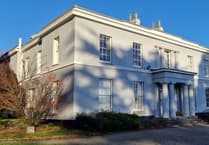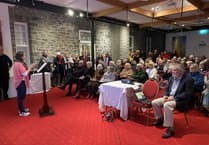LISTED building consent is being sought to address problems of dry rot causing spectacular fungal growth in rooms at Tavistock Museum.
The museum is part of the historic Court Gate complex in the centre of Tavisock, owned by Tavistock Town Council and leased to the Tavistock Museum Trust.
The application to West Devon Borough Council is proposing that rotten timbers are replaced by galvanised steel beams which would be resistent to both rot and moisture.
Photographs submitted as part of the application to West Devon Borough Council show fungi growing from the walls and ceilings on the first floor. The moisture could be penetrating the stonework around the front door of the early 19th century gothic-style buiding.
Gillespie Yunnie Architects, proposing the work which would be carried out by John Grimes Partnership, stated: ‘Penatrating rain through the exising stonework and joints on this elevation is the most likely root cause of rot which has affected internal timber structures and finishes. The issue has been exacerbated by cement repointing in some areas of the walling.’
The proposal is to replace timber beams and lintols with steel ones which would then be recovered, as well as to strip out infected timbers from the structure and treat fungal infection as well a apply preservative.
The work will also involve preventing leaks into the building. Comments are invited on the application by January 23, 4282/22/LBC.Also in this week’s plans, a Sampford Courtenay couple have applied for planning permission to replace a leaking corrugated iron barn with a prefabricated stable block on their new smallholding.
The couple, who have bought land at Bude Farm about a mile and a half from Exbourne, want to site a stable block to use house livestock. They plan to rear a small flock of sheep along with half a dozen pigs and to keep free range chickens for eggs.
The prefabricated building, which they already own and are moving from a previous property, would replace a barn which is in a poor state of repair with a leaking roof and suspected structural defects.
The proposed replacement building consists of nine looseboxes, two of which had been used on their previous proprty for chickens.
The remainder can be used for horses, sheep and pigs.
The new building will be of ‘lesser scale than the existing agricultural building both in terms of footprint and in height’ and is made of timber that ‘is already weathered and will assimilate well into its setting’.
See 4419/22/FUL on the West Devon Borough Council website.




